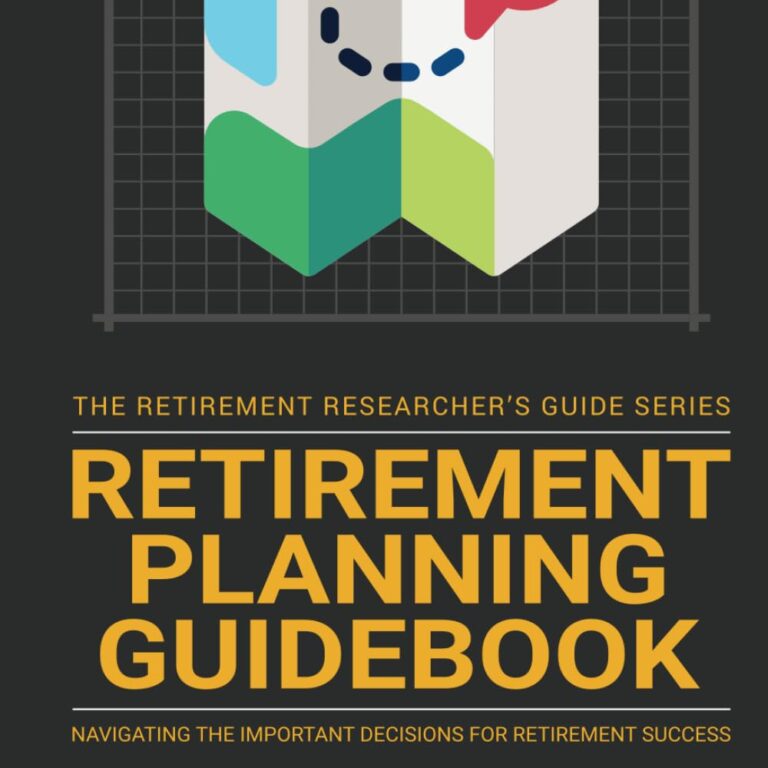Legal Disclaimer:The information provided in this article is for general informational and entertainment purposes only. It should not be considered as financial, investment, legal, or tax advice. The content presented is based on the author’s opinion and understanding of the current economic climate and market conditions as of the date of writing.This article does not constitute a recommendation to buy, sell, or hold any investment or financial product. The strategies and ideas discussed may not be suitable for all investors and should not be relied upon for making investment decisions.Investing involves risk, including the possible loss of principal. Past performance is not indicative of future results. The value of investments and the income from them can go down as well as up and investors may not get back the amounts originally invested.Readers are strongly encouraged to consult with their own personal financial advisor, tax professional, legal counsel, or other qualified professionals before making any investment or financial decisions. These professionals can provide advice tailored to your individual circumstances, goals, and risk tolerance.The author and publisher of this article disclaim any liability, loss, or risk incurred as a consequence, directly or indirectly, of the use and application of any of the contents herein.Remember that investment strategies should be personalized to your unique financial situation and objectives. What works for one investor may not be appropriate for another. Always conduct your own research and due diligence before making any investment decisions.
Following there are links that are affiliate links. By clicking on these links you understand that by making a purchase Middle Child Money or one of our writers may get a commission.
As we embark on the journey through 2025, the financial landscape is undergoing significant transformations. The recent inauguration of Donald Trump for his second term as President of the United States has ushered in a new era of economic policies and market dynamics. Investors, both seasoned and novice, are now faced with the challenge of adapting their strategies to this evolving environment. The equity and bond markets are responding to these changes in complex and sometimes unpredictable ways, necessitating a careful reassessment of investment approaches.
This article aims to provide a comprehensive guide for individuals and families looking to fine-tune their investment strategies in 2025. We will delve into ten crucial areas that deserve your attention as you navigate the financial waters of this new political and economic reality. From cash management to defensive strategies, we’ll explore how various asset classes and sectors are likely to perform in the coming years.
The importance of staying informed and adaptable cannot be overstated in these times. As policies shift and markets react, what worked in previous years may no longer yield the same results. This is why it’s crucial to understand the nuances of the current economic climate and how they might affect your personal financial goals.
In the following sections, we’ll discuss strategies for optimizing your portfolio, considering factors such as risk tolerance, time horizon, and overall financial objectives. We’ll examine how to balance growth opportunities with the need for stability and income. Additionally, we’ll explore how to leverage new technologies and investment vehicles to your advantage.
Remember, while this guide provides valuable insights, it’s essential to consider your unique financial situation. What works for one investor may not be suitable for another. Therefore, we encourage you to use this information as a starting point for further research and discussion with financial professionals.
As we navigate through each section, keep in mind that successful investing is often about finding the right balance. It’s about weighing potential rewards against risks, short-term gains against long-term stability, and personal comfort levels against market realities. With that in mind, let’s embark on this exploration of investment strategies for 2025, equipped with knowledge and ready to make informed decisions for a prosperous financial future.
Recommended Reading
1. Reassessing Cash Positions
First and foremost, let’s delve into the critical topic of cash management in your investment portfolio. As we progress through 2025, the landscape for cash and cash equivalents is shifting dramatically. The Federal Reserve’s monetary policy decisions are having a significant impact on interest rates. This shift is making the once-attractive high-yield savings accounts less appealing to investors seeking meaningful returns.
Given this new reality, it’s crucial to reassess how much cash you’re holding and where. While maintaining liquidity is important, keeping large sums in low-yield accounts may be counterproductive. Consider reallocating some of your cash reserves to potentially higher-yielding investments. Longer-term bonds or dividend-paying stocks could offer better returns in the current environment.
However, it’s essential to strike a balance. Don’t neglect the importance of maintaining an emergency fund. Your budget should include provisions for unexpected expenses or income disruptions. This safety net is crucial for financial stability and peace of mind. Aim to keep three to six months of living expenses in easily accessible accounts.
Credit cards can serve as a short-term liquidity tool, but they should be used judiciously. While they offer convenience and potential rewards, high interest rates can quickly erode any financial gains. If you do use credit cards for short-term cash needs, have a solid plan to pay off the balance promptly.
Consider laddering your cash holdings. This strategy involves dividing your cash among different accounts or investments with varying levels of liquidity and yield. For instance, you might keep some money in a high-yield savings account, some in short-term CDs, and some in money market funds.
Don’t forget about the impact of inflation on your cash holdings. In periods of higher inflation, the purchasing power of cash can erode quickly. This is another reason to consider moving some cash into investments that have the potential to outpace inflation.
Regularly review your cash position as part of your overall financial strategy. As your life circumstances change, so too should your approach to cash management. What works for you today may need adjustment in the future. Stay informed about changes in interest rates and economic conditions that might affect your cash strategy.
Lastly, consider the tax implications of your cash management decisions. Interest earned on savings accounts and CDs is typically taxable as ordinary income. In contrast, certain bonds and dividend-paying stocks may offer more favorable tax treatment. Consult with a tax professional to understand how different cash management strategies might affect your overall tax situation.
2. Embracing Bond Market Opportunities
Next, we turn our attention to the bond market, which is presenting a new set of opportunities in 2025. The yield curve, a key indicator of economic health and interest rate expectations, is showing signs of normalization. This shift is creating a more favorable environment for fixed-income investors who have endured years of low yields.
As we navigate this changing landscape, it’s worth considering adding some duration to your bond portfolio. Longer-term bonds are now offering more attractive yields than we’ve seen in recent years. This could provide a steady stream of income for investors willing to commit their funds for extended periods. However, it’s crucial to balance the potential for higher yields against the risk of interest rate fluctuations.
Corporate bonds are another area of potential opportunity. The Trump administration’s deregulation efforts are likely to benefit many sectors, particularly financials. This could lead to improved credit ratings and potentially higher yields for corporate bonds. However, it’s essential to conduct thorough research or consult with a financial advisor before investing in individual corporate bonds.
While the prospects for bonds are improving, it’s crucial to remain vigilant about inflation risks. Inflation can erode the real returns of fixed-income investments. Consider incorporating Treasury Inflation-Protected Securities (TIPS) into your bond portfolio as a hedge against inflation. These securities adjust their principal value based on changes in the Consumer Price Index.
Diversification remains a key principle in bond investing. Spread your investments across different types of bonds, maturities, and issuers. This approach can help mitigate risk and potentially smooth out returns over time. Consider a mix of government bonds, corporate bonds, municipal bonds, and international bonds.
For those seeking professional management, bond mutual funds and ETFs can offer diversification and professional oversight. These vehicles allow you to gain exposure to a broad range of bonds without the need to select and manage individual securities. However, be sure to understand the fees associated with these funds, as they can impact your overall returns.
As you adjust your bond strategy, always keep your personal risk tolerance in mind. Bonds are typically considered less risky than stocks, but they’re not without risk. Factors such as interest rate changes, credit risk, and inflation can all impact bond performance. Align your bond investments with your overall financial goals and risk profile.
Don’t overlook the potential tax advantages of certain types of bonds. Municipal bonds, for instance, often offer tax-free income at the federal level and potentially at the state level for residents. This can be particularly attractive for investors in higher tax brackets. However, always consult with a tax professional to understand the full implications for your specific situation.
Lastly, consider the role of bonds in your overall portfolio allocation. While the improved yield environment may make bonds more attractive, they should still be balanced against other asset classes like stocks and alternative investments. Regularly rebalance your portfolio to maintain your desired asset allocation as market conditions change.
3. Navigating Equity Markets
Moving on, let’s explore the dynamic landscape of equity markets in 2025. The stock market has demonstrated remarkable resilience in the face of political changes and economic uncertainties. As we navigate this new era under the Trump administration, certain sectors are poised to benefit from policy shifts while others may face challenges.
One area that warrants attention is the industrial sector. The renewed focus on “Made in America” initiatives is likely to boost domestic manufacturing and infrastructure development. Companies in sectors such as construction, heavy machinery, and aerospace could see increased demand for their products and services. Consider researching firms with strong domestic operations and a history of adapting to policy changes.
Financial stocks are another sector that may rally due to deregulation efforts. Banks and other financial institutions could benefit from reduced regulatory burdens, potentially leading to increased profitability. However, it’s important to balance this potential upside with the risks inherent in the financial sector, such as exposure to economic downturns.
On the flip side, technology and healthcare sectors may face headwinds due to increased scrutiny and potential policy changes. However, this doesn’t mean these sectors should be avoided entirely. Look for companies with strong fundamentals, innovative products, and adaptable business models that can thrive despite regulatory challenges.
Diversification remains a cornerstone of sound equity investing. Consider maintaining a mix of growth and value stocks across various sectors and market capitalizations. This approach can help mitigate risk and potentially smooth out returns over time. Exchange-traded funds (ETFs) and mutual funds can be useful tools for achieving broad diversification without the need to select individual stocks.
As you navigate the equity markets, pay attention to valuation metrics. In times of market optimism, it’s easy for stock prices to become disconnected from underlying fundamentals. Look for companies with strong balance sheets, consistent cash flows, and reasonable valuations relative to their peers and historical averages.
Don’t overlook the potential of international equities. While domestic stocks may benefit from certain policies, global diversification remains important. Emerging markets, in particular, may offer growth opportunities not available in more mature economies. However, be mindful of currency risks and geopolitical factors when investing internationally.
Dividend-paying stocks can play a valuable role in your equity portfolio, especially in times of market uncertainty. Companies with a history of consistent dividend payments often have stable business models and strong cash flows. These stocks can provide a steady income stream and potentially offer some downside protection during market volatility.
Consider the impact of share buybacks on stock performance. Many companies, flush with cash from tax cuts, may continue to engage in share repurchases. While this can boost earnings per share and stock prices in the short term, it’s important to evaluate whether these buybacks are creating long-term value for shareholders.
Lastly, stay informed about macroeconomic trends that can impact equity markets. Factors such as interest rates, inflation, GDP growth, and employment figures can all influence stock performance. Regularly review your equity holdings and be prepared to make adjustments as economic conditions evolve.
4. Capitalizing on Infrastructure Investments
Furthermore, infrastructure spending is shaping up to be a major theme in the investment landscape of 2025. The Trump administration has signaled a strong commitment to large-scale infrastructure projects, which could create significant opportunities for investors. This focus on rebuilding and modernizing America’s infrastructure has the potential to benefit a wide range of industries and companies.
One of the most direct beneficiaries of increased infrastructure spending are likely to be construction and engineering firms. These companies stand to gain from contracts for building roads, bridges, airports, and other critical infrastructure. Research companies with a strong track record of completing large-scale projects on time and within budget. Look for firms with healthy balance sheets and the capacity to take on major new projects.
Materials companies are another sector poised to benefit from infrastructure initiatives. Producers of steel, concrete, asphalt, and other construction materials could see increased demand for their products. Consider companies with efficient production processes and strong distribution networks that can meet the potential surge in demand.
The technology sector, while facing some headwinds, could also play a crucial role in infrastructure development. Smart city technologies, advanced traffic management systems, and energy-efficient building solutions are all areas where tech companies could contribute to and benefit from infrastructure projects. Look for companies at the intersection of technology and infrastructure.
Utilities and energy companies may also see opportunities from infrastructure spending. Upgrades to the power grid, investments in renewable energy infrastructure, and improvements to water and waste management systems could all be part of a comprehensive infrastructure plan. Consider utilities with forward-thinking management teams and a focus on modernizing their operations.
Real estate investment trusts (REITs) focused on infrastructure could offer an interesting way to gain exposure to this theme. These might include REITs that own cell towers, data centers, or energy infrastructure. These investments can provide both growth potential and income through dividend payments.
While the potential for infrastructure investments is exciting, it’s important to approach this theme with a balanced perspective. Political negotiations can impact the scale and timing of infrastructure projects. Be prepared for potential delays or changes in priorities that could affect infrastructure-related investments.
Consider using exchange-traded funds (ETFs) or mutual funds focused on infrastructure as a way to gain broad exposure to this theme. These funds can provide diversification across multiple companies and sectors involved in infrastructure development. However, be sure to understand the composition and fees associated with these funds before investing.
Don’t forget about the potential for international infrastructure investments. Many emerging markets are undertaking massive infrastructure projects, which could present opportunities for global companies. However, be mindful of the additional risks associated with investing in foreign markets.
Lastly, remember that infrastructure investments often have a long-term horizon. While there may be short-term fluctuations based on policy announcements or project approvals, the full benefits of infrastructure spending may take years to materialize. Align your infrastructure investments with your long-term financial goals and risk tolerance.
5. Adapting to Trade Policy Changes
Additionally, trade policy is likely to undergo significant changes under the new Trump administration, requiring investors to adapt their strategies accordingly. The potential for increased tariffs, particularly on imports from China, could reshape global supply chains and impact corporate profits across various sectors. This evolving trade landscape presents both challenges and opportunities for savvy investors.
One key consideration is the potential advantage for companies with strong domestic operations. As trade tensions potentially escalate, firms that rely heavily on domestic supply chains and markets may be better positioned to weather the storm. Look for companies that have invested in local manufacturing capabilities or have the flexibility to shift production domestically if needed.
However, it’s important not to completely disregard companies with global operations. Many multinational corporations have the resources and adaptability to navigate changing trade dynamics. Focus on firms with diversified supply chains and the ability to pass on increased costs to consumers without significantly impacting demand.
The agricultural sector is likely to be particularly sensitive to trade policy changes. Farmers and agribusiness companies may face challenges if export markets become more restricted. However, they could also benefit from government support programs aimed at mitigating the impact of trade disputes. Consider the entire agricultural value chain when evaluating investment opportunities in this sector.
Technology companies, especially those in the semiconductor industry, may face unique challenges and opportunities. Trade restrictions could disrupt global supply chains for high-tech components. However, this could also spur investment in domestic semiconductor production. Look for companies that are proactively addressing potential supply chain disruptions.
Don’t overlook the potential impact on currencies. Trade tensions can lead to fluctuations in exchange rates, which can affect the profitability of companies with significant international operations. Consider hedging strategies or currency-hedged ETFs to mitigate foreign exchange risk in your portfolio.
The automotive industry is another sector likely to be significantly impacted by trade policy changes. Tariffs on imported vehicles and parts could reshape the competitive landscape. Companies with flexible manufacturing capabilities and strong brand loyalty may be better positioned to adapt to these changes.
As you evaluate potential investments, pay close attention to companies’ disclosures about their exposure to trade-related risks. Look for management teams that are proactively addressing these challenges and have clear strategies for adapting to policy changes.
Consider the potential for new trade agreements or renegotiated deals. While some trade relationships may become more strained, others could improve. Stay informed about ongoing trade negotiations and consider how they might impact different sectors and companies.
Lastly, remember that trade policy can have broader economic implications. Changes in trade dynamics can impact inflation, economic growth, and employment levels. These macroeconomic factors should be considered as part of your overall investment strategy.
6. Leveraging Tax Policy Adjustments
Moreover, tax policy adjustments under the new Trump administration are likely to have far-reaching implications for investors. Understanding these changes and how to leverage them effectively can significantly impact your investment returns and overall financial strategy. Let’s explore some key considerations in this evolving tax landscape.
Corporate tax rates are a central focus of the administration’s economic policy. If further corporate tax cuts are implemented, it could potentially boost earnings for U.S. companies. This might support higher stock valuations, particularly for companies that have a significant portion of their operations domestically. Consider increasing exposure to firms that are likely to benefit most from lower corporate tax rates.
However, it’s crucial to balance this potential upside with the broader economic implications. Tax cuts could lead to increased federal deficits, which might have long-term consequences for the economy. This could include higher inflation or interest rates in the future. Diversifying your portfolio across different asset classes can help mitigate these long-term risks.
Changes to personal income tax rates and deductions could also impact your investment strategy. If personal tax rates are lowered, it might increase disposable income for many Americans. This could boost consumer spending, benefiting companies in the retail, entertainment, and travel sectors. Consider how changes in consumer behavior might affect different industries.
The treatment of investment income is another area to watch closely. Any changes to capital gains tax rates or the taxation of dividends could influence investment decisions. For instance, if dividend taxes are reduced, dividend-paying stocks might become more attractive. Stay informed about these potential changes and be prepared to adjust your portfolio accordingly.
Estate tax policies might also see adjustments. If estate tax exemptions are increased or the tax is eliminated entirely, it could have significant implications for wealth transfer strategies. This might influence decisions about gifting, trust structures, and life insurance policies. Consult with a financial advisor or estate planning attorney to understand how these changes might affect your long-term financial plans.
Tax-advantaged investment accounts, such as 401(k)s and IRAs, might see policy changes as well. Any adjustments to contribution limits or tax treatment of these accounts could impact retirement savings strategies. Be prepared to maximize your use of these accounts based on new regulations.
The potential for changes in state and local tax (SALT) deductions could have significant implications for investors in high-tax states. If SALT deductions are further limited or eliminated, it might impact the attractiveness of municipal bonds from these states. Consider how changes to SALT deductions might affect your overall tax situation and investment choices.
Don’t overlook the potential impact of tax policy on specific industries. For example, changes to renewable energy tax credits could affect the profitability and growth prospects of companies in the clean energy sector. Similarly, adjustments to depreciation rules could impact capital-intensive industries. Research how potential tax changes might affect different sectors in your portfolio.
Consider the timing of your investment decisions in light of potential tax changes. If capital gains taxes are expected to increase in the future, it might make sense to realize gains in the current tax year. Conversely, if tax rates are expected to decrease, deferring capital gains might be advantageous. Always consult with a tax professional before making significant decisions based on anticipated policy changes.
Lastly, remember that tax efficiency should be just one factor in your investment strategy. While it’s important to minimize your tax burden, don’t let tax considerations override sound investment principles. Focus on building a diversified portfolio aligned with your long-term financial goals and risk tolerance.
7. Exploring Energy Sector Opportunities
Next, let’s consider the energy sector, which is likely to see significant changes under the new Trump presidency. The administration’s policies may favor traditional energy sources, potentially benefiting oil and gas companies. However, it’s crucial to recognize that the global trend towards renewable energy is likely to continue, driven by technological advancements and growing environmental concerns.
In the realm of traditional energy, look for companies with strong balance sheets and efficient operations. Those with low production costs are better positioned to weather potential price fluctuations. Consider integrated oil and gas companies that have operations across the entire value chain, from exploration and production to refining and distribution.
Natural gas companies may see particular benefits from policies promoting domestic energy production. The U.S. has abundant natural gas reserves, and increased exports could boost profitability for companies in this sector. Research firms with strong export capabilities and those investing in liquefied natural gas (LNG) infrastructure.
Despite potential policy headwinds, renewable energy companies shouldn’t be overlooked. The cost of solar and wind power continues to decline, making these sources increasingly competitive with traditional energy. Look for companies with innovative technologies and strong project pipelines. Consider firms that are diversifying their energy portfolios to include both traditional and renewable sources.
Energy storage is another area with significant growth potential. As renewable energy adoption increases, the need for effective storage solutions becomes more critical. Companies developing advanced battery technologies or grid-scale storage solutions could see substantial growth in the coming years.
The electric vehicle (EV) market is closely tied to energy sector trends. While traditional auto manufacturers are increasingly entering this space, also consider companies focused on EV charging infrastructure. The growth of the EV market could create opportunities in related sectors such as lithium mining and battery production.
Energy efficiency companies could also present interesting investment opportunities. As businesses and consumers look to reduce energy costs, demand for energy-efficient technologies and services is likely to grow. This could include everything from smart home devices to industrial energy management systems.
Don’t forget about the potential of nuclear energy. While it remains controversial, nuclear power could play a role in meeting carbon reduction goals. Companies involved in nuclear plant operations or developing next-generation nuclear technologies might be worth considering.
Lastly, keep an eye on emerging technologies in the energy sector. Areas such as hydrogen fuel cells, carbon capture and storage, and advanced biofuels could disrupt the energy landscape in the coming years. While these technologies may be higher risk, they also offer potentially high rewards for early investors.
Remember to balance your energy sector investments with the overall composition of your portfolio. Energy stocks can be volatile, so consider your risk tolerance when allocating funds to this sector. Diversification across different energy subsectors can help mitigate some of this risk.
8. Prioritizing Innovation and Technology
Furthermore, innovation remains a key driver of economic growth, even as the technology sector faces potential regulatory challenges. While large tech companies may encounter headwinds, smaller innovators and niche players in the tech space could thrive in this new environment. It’s crucial to look beyond the headline-grabbing tech giants and explore the broader landscape of technological innovation.
Artificial Intelligence (AI) continues to be a transformative force across industries. Look for companies that are not just developing AI technologies, but also those effectively implementing AI to improve their operations and create new products or services. This could include firms in sectors as diverse as healthcare, finance, and manufacturing.
The Internet of Things (IoT) is another area ripe for growth. As more devices become connected, opportunities arise in areas such as smart home technology, industrial IoT, and wearable devices. Consider companies developing IoT platforms, sensors, or data analytics capabilities to leverage this trend.
Cybersecurity is becoming increasingly critical as our digital dependence grows. With the rising frequency and sophistication of cyber attacks, companies offering innovative security solutions are likely to see strong demand. Look for firms with a track record of staying ahead of evolving threats.
Cloud computing continues to transform how businesses operate. While the major cloud providers are well-known, consider companies offering specialized cloud services or those helping businesses manage multi-cloud environments. The shift to cloud-based solutions is likely to accelerate, creating opportunities for agile, innovative players.
Biotechnology and genomics represent another frontier of innovation. Companies working on gene therapies, personalized medicine, or using AI in drug discovery could revolutionize healthcare. However, be aware that this sector can be volatile, with success often hinging on clinical trial results and regulatory approvals.
The field of quantum computing, while still in its early stages, holds immense potential. Companies making strides in this area could see significant long-term growth. However, given the speculative nature of this technology, it should represent only a small, high-risk portion of your portfolio.
Don’t overlook innovations in financial technology (fintech). From blockchain applications to digital payment systems and robo-advisors, fintech is reshaping the financial services landscape. Look for companies that are not just developing new technologies, but also successfully partnering with established financial institutions.
3D printing technology continues to advance, with applications expanding beyond prototyping to full-scale manufacturing. Companies innovating in this space, particularly those focused on industrial applications, could see significant growth as the technology matures.
Lastly, consider the potential of augmented and virtual reality technologies. While consumer adoption has been slower than initially predicted, these technologies are finding valuable applications in areas such as training, education, and industrial design.
When investing in innovative technologies, it’s crucial to maintain a long-term perspective. Many of these investments may not pay off immediately, but could offer substantial returns over time. Balance your portfolio with more established, income-generating investments to offset the higher risk associated with emerging technologies.
9. Incorporating Real Estate Investments
Additionally, real estate can play a vital role in a diversified investment portfolio, especially given the potential for regulatory changes under the new administration. The real estate sector may benefit from deregulation efforts, potentially creating new opportunities for investors. However, it’s important to approach this sector with a nuanced understanding of its various subsectors and the factors that drive their performance.
Real Estate Investment Trusts (REITs) offer a way to invest in real estate without the need to directly own and manage properties. REITs can provide exposure to various property types, including residential, commercial, industrial, and specialized facilities like data centers or cell towers. Look for REITs with strong management teams, quality assets, and sustainable dividend yields.
The commercial real estate market may see significant changes in the wake of the pandemic and evolving work patterns. While office properties in some markets may struggle, others could benefit from companies seeking to upgrade their spaces to attract employees back to the office. Industrial properties, particularly those supporting e-commerce operations, may continue to see strong demand.
In the residential sector, keep an eye on demographic trends and migration patterns. The ongoing shift towards remote work could drive demand for housing in suburban and rural areas. Consider investments in single-family rental properties or multifamily housing in growing markets.
The hospitality sector, which was hit hard by the pandemic, may present opportunities for investors willing to take on higher risk. As travel rebounds, well-located hotels and resorts could see a strong recovery. However, be selective and focus on properties with strong brand affiliations and efficient operations.
Don’t overlook niche real estate sectors that could benefit from broader economic trends. For example, self-storage facilities have shown resilience in various economic conditions. Healthcare-related real estate, such as medical office buildings or senior living facilities, could benefit from an aging population.
Real estate crowdfunding platforms have made it easier for individual investors to participate in commercial real estate deals. These platforms can offer access to institutional-quality properties with lower minimum investments. However, be sure to thoroughly research the platform and understand the risks involved before committing funds.
Consider the potential impact of interest rates on real estate investments. If rates remain low, it could continue to support property values and make financing more affordable. However, be prepared for the possibility of rising rates, which could impact property valuations and financing costs.
Sustainability is becoming increasingly important in real estate. Properties with green certifications or energy-efficient features may command premium valuations and attract quality tenants. Look for real estate companies and REITs that are prioritizing sustainability in their portfolios.
Lastly, remember that real estate markets can vary significantly by location. What works in one city or region may not apply to another. Consider diversifying your real estate investments across different geographic areas and property types to mitigate risk.
10. Focusing on Defensive Strategies
Lastly, don’t neglect defensive strategies in your portfolio, especially given the potential for increased market volatility due to policy shifts and economic uncertainties. While it’s important to position your portfolio for growth, protecting your wealth is equally crucial. Implementing defensive strategies can help cushion your portfolio against potential market downturns and provide stability during turbulent times.
One key defensive strategy is to include high-quality, dividend-paying stocks in your portfolio. Look for companies with strong balance sheets, consistent cash flows, and a history of maintaining or increasing their dividends even during economic downturns. These stocks can provide a steady income stream and potentially offer some downside protection.
Consumer staples and utilities are sectors that often perform well during periods of economic uncertainty. These companies typically provide essential goods and services that remain in demand regardless of economic conditions. However, be mindful of valuations, as defensive sectors can become overvalued in times of market stress.
Consider allocating a portion of your portfolio to bonds, which can play a crucial defensive role. While yields may be lower compared to stocks, bonds can provide stability and income. A mix of government and high-quality corporate bonds can help balance risk and return. Treasury Inflation-Protected Securities (TIPS) can offer protection against inflation risks.
Gold and other precious metals have traditionally been seen as safe-haven assets during times of economic uncertainty. While they shouldn’t make up a large portion of your portfolio, a small allocation to precious metals can provide diversification and potential protection against currency devaluation.
Don’t overlook the importance of cash in a defensive strategy. While holding cash may seem counterintuitive in a low-interest-rate environment, it provides liquidity and flexibility. Having cash on hand allows you to take advantage of investment opportunities that may arise during market downturns.
Consider using options strategies to protect your portfolio. Techniques such as buying put options on stocks you own or on index ETFs can provide downside protection. However, options strategies can be complex, so consult with a financial advisor if you’re not familiar with these instruments.
Low-volatility ETFs are another tool to consider for a defensive approach. These funds aim to provide exposure to stocks with lower volatility than the broader market. While they may underperform during strong bull markets, they can offer smoother returns over time.
Diversification remains one of the most effective defensive strategies. Spread your investments across different asset classes, sectors, and geographic regions. This approach can help mitigate the impact of poor performance in any single area of your portfolio.
Lastly, regularly rebalancing your portfolio is a key defensive tactic. As market conditions change, your asset allocation can drift from your target. Periodic rebalancing helps maintain your desired risk level and can potentially improve long-term returns.
Conclusion
In conclusion, navigating the investment landscape of 2025 under the new Trump presidency requires a thoughtful and adaptable approach. The strategies we’ve explored – from reassessing cash positions to embracing defensive tactics – provide a comprehensive framework for fine-tuning your investment portfolio. However, it’s crucial to remember that these strategies should be tailored to your individual financial situation, goals, and risk tolerance.
As we’ve seen, the equity and bond markets are responding to policy shifts and economic changes in complex ways. Opportunities are emerging in sectors benefiting from infrastructure spending and deregulation, while others face potential headwinds. The key is to maintain a diversified portfolio that can weather various economic scenarios while still positioning for growth.
Innovation continues to drive economic progress, creating exciting investment opportunities in areas such as artificial intelligence, renewable energy, and biotechnology. However, these high-growth potential investments should be balanced with more stable, income-generating assets to create a well-rounded portfolio.
Real estate remains an important consideration for many investors, offering potential for both income and capital appreciation. The sector is evolving in response to demographic shifts and changing work patterns, creating both challenges and opportunities.
Throughout all of these considerations, it’s vital to keep a long-term perspective. While short-term market movements can be unsettling, history has shown that patient, disciplined investors are often rewarded over time. Regularly review and rebalance your portfolio to ensure it remains aligned with your financial goals and risk tolerance.
Remember that successful investing is not just about choosing the right assets – it’s also about managing your behavior. Avoid making emotional decisions based on short-term market fluctuations or political headlines. Instead, stick to your investment plan and make adjustments based on careful analysis and consideration of your long-term objectives.
Lastly, don’t hesitate to seek professional advice. The investment landscape is complex and ever-changing. A qualified financial advisor can help you navigate these waters, providing personalized guidance based on your unique financial situation and goals.
As we move through 2025 and beyond, stay informed, remain flexible, and continue to educate yourself about financial markets and investment strategies. By doing so, you’ll be well-positioned to make informed decisions and work towards achieving your financial objectives in this dynamic economic environment.
Disclaimer
The content provided on Middle Child Money is for informational and entertainment purposes only. We are not licensed financial advisors, and the information shared on this blog should not be considered professional financial advice. We encourage all readers to consult with a licensed financial professional to discuss their individual financial situations and needs. The opinions expressed on this blog are solely those of the author, Nate Bradley, and do not reflect the views of any affiliated organizations. Middle Child Money cannot be held liable for any actions taken based on the information provided on this site.











